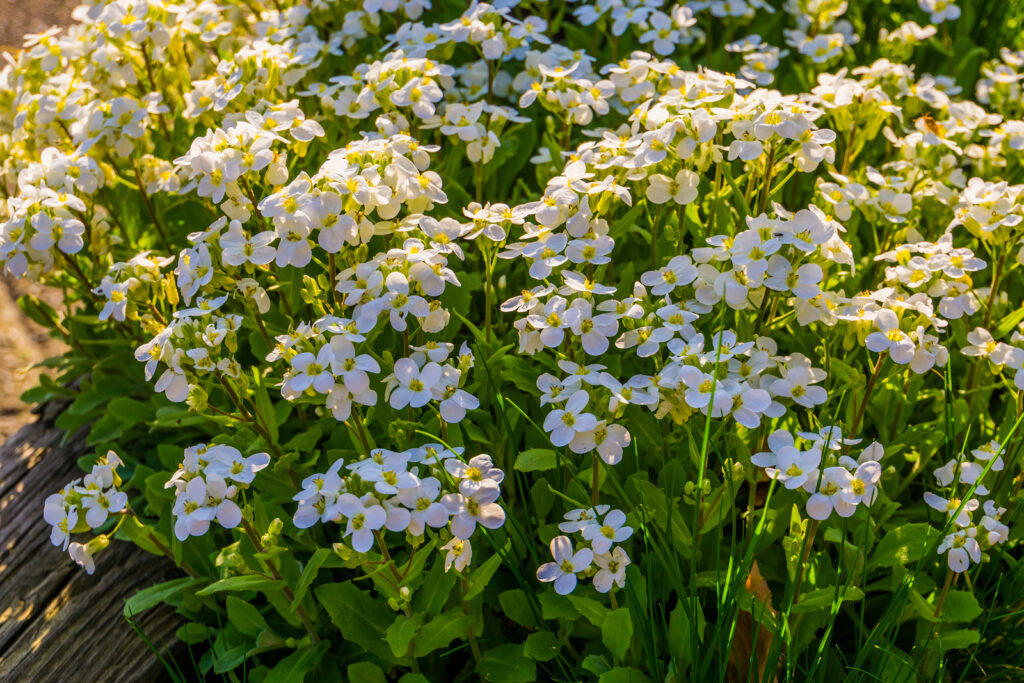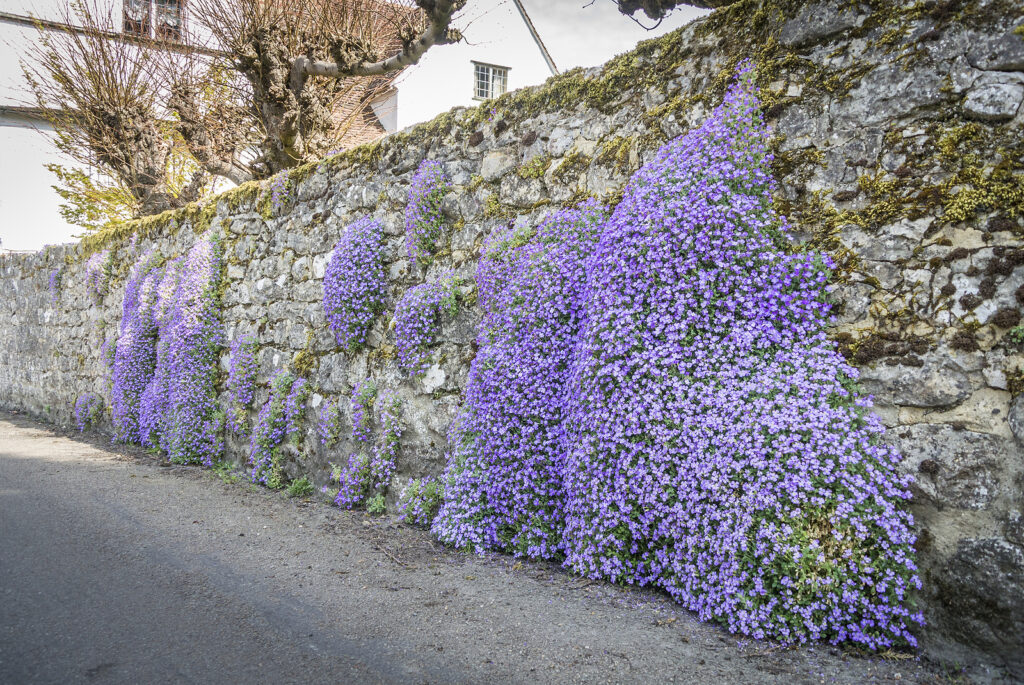False Rockrose, Aubrieta, is a mat-forming groundcover often seen spilling over rock walls or in rock gardens. It forms a beautiful blanket of tiny bright purple to pink flowers in spring.
Aubrieta is a low-growing perennial of the Mustard family. You will find various spellings of the name; it has also been spelled Aubrietia.
Aubrieta grows well in semi-shade. It grows to a maximum height of 12 inches. The attractive silvery-green foliage covers spaces between rocks and along borders. In spring and early summer the flowers, when grown in masses, form a blanket of rosy-purple, blue, or lilac. They look especially well combined with Arabis or alyssum.
Plants are grown from seed sown the previous season, or they may be propagated by layering the trailing shoot or by the division of the mats or clumps.

Get to know Aubrieta
- Plant type: Perennial
- Growing Zones and range: 4-8
- Hardiness: Best where summer humidity and temperatures are not excessive
- Height and width: 6 to 8 inches tall (15-20cm); 8 to 12 inches (20-30cm) wide
- Form: Low, mounding plant with weak stems clothes in sparsely toothed evergreen leaves; plants spread by rhizomes
- Flower form: Four-petaled 3/4- inch flowers may be white, rose, or purple
- Use: Groundcover on slopes and in rock gardens; edging at front of beds and borders
- Bloom time: Early to mid-spring, during bulb blooming season
- Botanical name: Aubrieta deltoidea
- Common name: False Rockrose
Where to plant Aubrieta
- Plant Aubrieta in full sun
- Aubrieta grows best in well-drained rocky or stony soil. Add grit or sand to loamy soil.

When to plant Aubrieta
- Set out established plants in spring.
- Sow seed indoors or outdoors from spring to fall.
- Divide Aubrieta in fall. Take stem cuttings after flowering.
Planting and spacing Aubrieta
- Space Aubretia 12 to 18 inches apart.
How to water and feed Aubrieta
- Fertilize Aubrieta lightly if at all.
Aubrieta care
- Mulch around Aubrieta to conserve soil moisture.
- Cut back plants by two-thirds after blooming to False Rockrose compact.
- Aubrieta is susceptible to aphids, nematodes, and flea beetles.
- Aubrieta is susceptible to root rot if not in well-drained soil.
Aubrieta pests and diseases
- Plant in well-drained soil to avoid root rot, especially where nighttime temperatures are high.

Aubrieta propagation
- Aubrieta is a short-lived perennial. Start cuttings every year to replace spent plants.
Aubrieta varieties to grow
- Aubretia x cultorum, Aubreria, rock cress: Hybrids sometimes listed as A. deltoidea as one of the parent species; these are low-growing, mat-forming perennials that grow to 2 inches high and spread to feet; bears single and double flowers in pink, purple, mauve, violet purple, magenta, and red. Cultivars include: ‘Aurea Variegata’ has yellow-variegated leaves and blue-violet flowers; ‘Carnival’ has a profusion of violet flowers; ‘Purple Gem’ has royal purple flowers; ‘Royal Blue’ has dark blue flowers.















